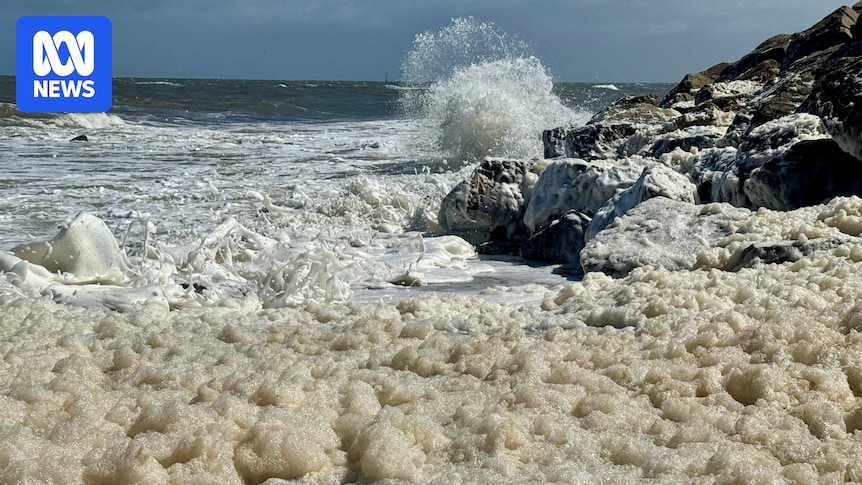Brown foam has blanketed the shores of one South Australia’s most famous beaches on Thursday as the Premier announces a new hotline to answer questions about the algal bloom.
SA Premier Peter Malinauskas said the phone service aimed to provide the community with official, accurate and science-based information about the developing ecological disaster.
“One of the challenges with the algal bloom is getting accurate information out into the community when we’re trying to compete with conspiracies from social media,” Mr Malinauskas said.
“We did want to provide a hotline so people can engage with government, get official information by picking up the phone and asking questions.”
He said the line would be open seven days per week, 9am to 5pm and would officially open tomorrow.
Foam washed up on the shores of Glenelg beach on Thursday. (ABC News: Marco Catalano)
“Sometimes face-to-face or a voice on the other end of the telephone can provide comfort and assurance,” he said.
Mr Malinauskas said the government was close to finalising its “summer plan” for beach-use which is due to be released publicly this month.
On Thursday morning beachgoers at Glenelg reported brown foam, a sign of the algal bloom, along the shore.
‘Bloom continues to persist’
South Australian Research and Development Institute Professor Mike Steer said testing showed the stretch of coast from northern Gulf St Vincent down to Brighton had the highest density of algae.
“We still have it persisting along the west coast of Spencer Gulf as well from around the Arno Bay to Lucky Bay area,” Professor Steer said.
“We’re still maintaining a level of surveillance to our satellite imagery and our oceanography and tracking the brevetoxin levels in our commercial shellfish production areas.”
Mr Steer said there was a “promising trend” of brevetoxin levels going down in some areas, including the Yorke Peninsula.
“We are seeing some evidence of declining cell counts and chlorophyll counts in areas around northern Spencer Gulf,” he said.
“The cuttlefish, for example, are still in an area that doesn’t have any Karenia mikimotoi at all which is a great sign.”
Mr Steer said foam events, such as the one seen at Glenelg, were becoming ‘more frequent’.
“Given our understanding of where the algae is and how it’s moving down the coast and the likely onshore winds and conditions we will see that event,” he said.
“We know naturally that we get foaming through organic matter that’s in the coastal environments churned up by swell chop and onshore winds.”
Murray Watt heads to Adelaide
Federal Environment Minister Murray Watt joined the state government’s weekly algal bloom briefing on Thursday morning.
Environment Minister Murray Watt said he was briefed on the algal bloom before July. (Supplied: ABC News)
Last week, a Senate inquiry heard Mr Watt was first formally briefed about the bloom on June 11, months after the algae was first detected.
But Mr Watt reiterated that he engaged with then-environment minister Susan Close about the situation “well before” July.
“Really, though May and June the advice being received by governments was that the event was likely to dissipate,” he said.
“I can assure you I was very much engaged with this before July.”Opposition calls for more business relief
Opposition Leader Vincent Tarzia has urged the state government to urgently release the summer plan to allow people to make holiday bookings.
“We’re hearing from providers right across the board that bookings are down and the fact this plan hasn’t been announced yet is also I think contributing to some of this anxiety in the community,” Mr Tarzia said
Mr Tarzia said some small businesses had “missed out” on bloom relief funding as they had not recorded a 30 per cent decline in turnover.
“We’re calling for automatic COVID-like style relief to be made available to businesses,” he said.
“The grant application process is onerous, there are hoops that you have to jump through.”

